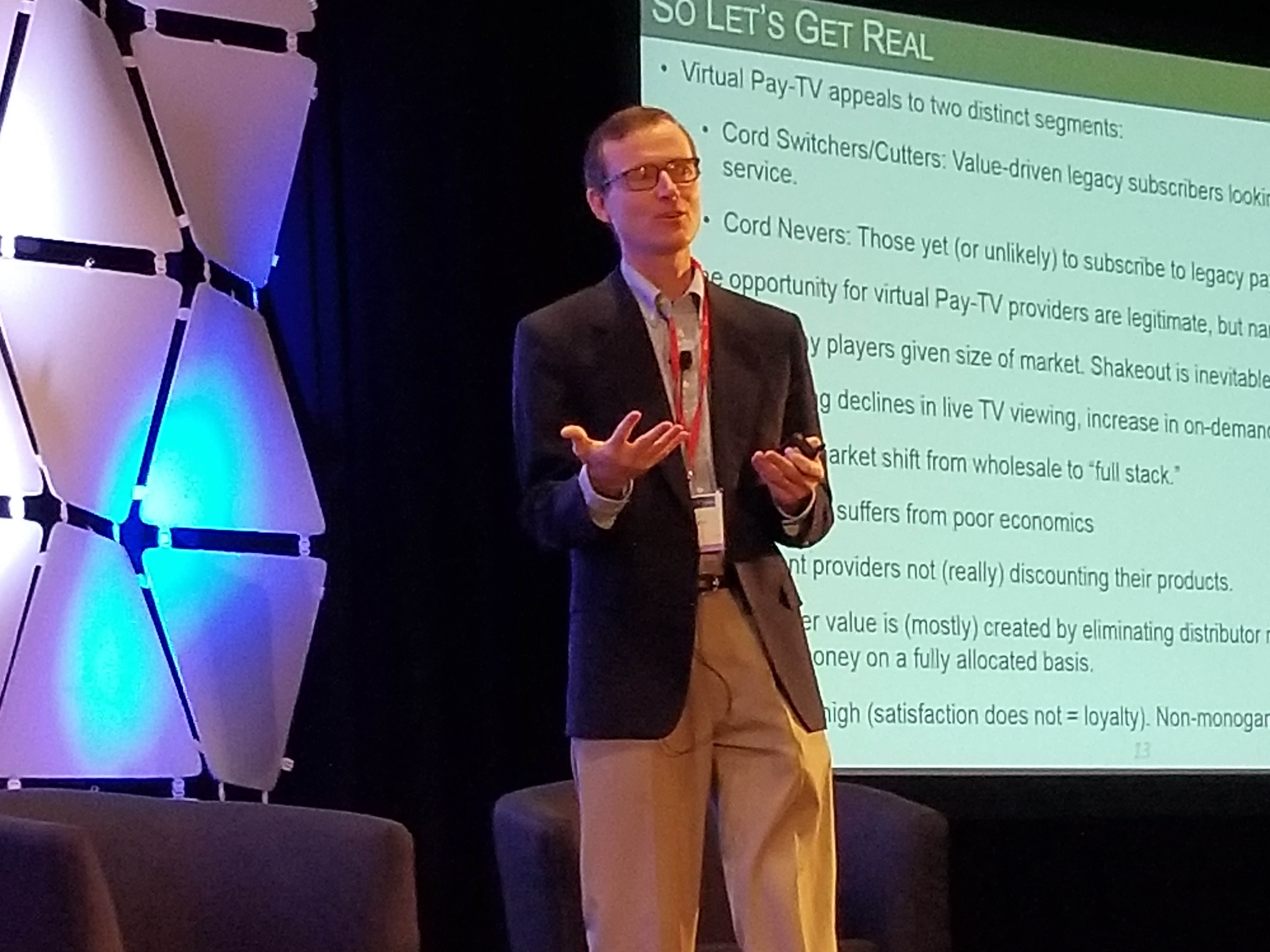Virtual Pay TV Market Set for a Shakeout: Analyst

Denver – The number of consumers that will gravitate to virtual MVPD services won’t be nearly enough to sustain a growing mix of players, setting the market up for an inevitable shakeout, a top video and TV analyst said.
The addressable market for those various OTT TV service providers is in the 10 to 20 million range, but it’s still not large enough to keep all of them fed, Joel Espelien, senior analyst with The Diffusion Group, said during a keynote presentation at The Pay TV Show, an event put on by Fierce and parent company Questex.
According to TDG’s latest forecast, U.S. virtual MVPDs will have 20.1 million subscribers by 2022 on the high-end model, 15.8 million for the mid-range estimate, and 11.6 million in the low case scenario.
That market is “too big to fail, but too small to succeed,” Espelien said.
Today’s players, which include PlayStation Vue, Philo, YouTube TV, Hulu, Sling TV, DirecTV Now, fuboTV and Sling TV, have combined to have between 5 million to 6 million subs.
For a nascent sector, that’s “not bad,” Espelien said, but stressed that there’s still not to share among a group of service providers, expected to expand in the months ahead, to be sustained for the long haul.
And while the expected rate of growth for the OTT TV sector would be seemingly a healthy one for a lot of industries, it’s a bit different in the pay TV arena in part because there is an ARPU tradeoff even when traditional MVPDs replace lost subs with those coming in via an OTT-delivered offering.
Multichannel Newsletter
The smarter way to stay on top of the multichannel video marketplace. Sign up below.
“It’s not a one-for-one trade,” Espelien pointed out.
OTT TV providers with the deepest pockets are best positioned to stay in the game and win, he predicted.
Espelien also shared some market data points about the market based on results from a sample size of about 1,000 consumers.
About 54.4% of virtual MVPD subs are cord-cutters, while just 8.9% are in the cord-nevers group. Notably, a sizable segment – 36.9% -- are also subscribing to a legacy pay TV service.
Some 52.6% of those OTT TV subs also supplementing their service by accessing local TV with over-the-air antennas. “They’re coming up with workaround” to get that local content, Espelien said.
Those consumers are more apt to build their own plans versus pre-set packages. And about 63% said they don’t want to pay for channels they don’t want to watch, a trend that is also true in the world of traditional pay TV subs.
Per TDG’s study, most virtual pay TV subs were looking for a change because their former pay TV provider had increased rates or the consumer was rethinking the household budget and how much was being allocated for TV and seeking a new value proposition.
SVOD service adoption is strong with the OTT TV subscriber group (91%) versus 70% among the larger group of adult broadband users.
Espelien is critical of the use of skinny bundles as a solution to the issue facing pay TV as younger consumers find less value in live TV, likening it to offering a smaller hamburger to a vegetarian.
As for who will benefit from the OTT TV movement, a clear one is the broadband service provider, which can transfer those margins to the data service, he said.
Services like Netflix and HBO also stand to benefit, as they look like “incredible values” when compared to a $40 pay TV package, Espelien added.
